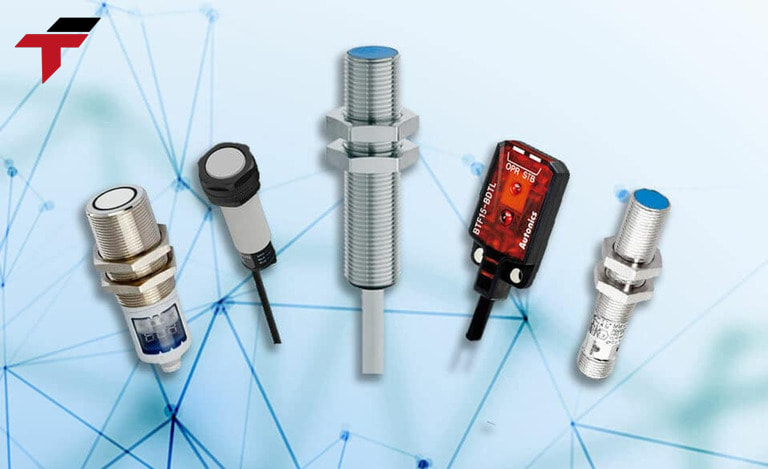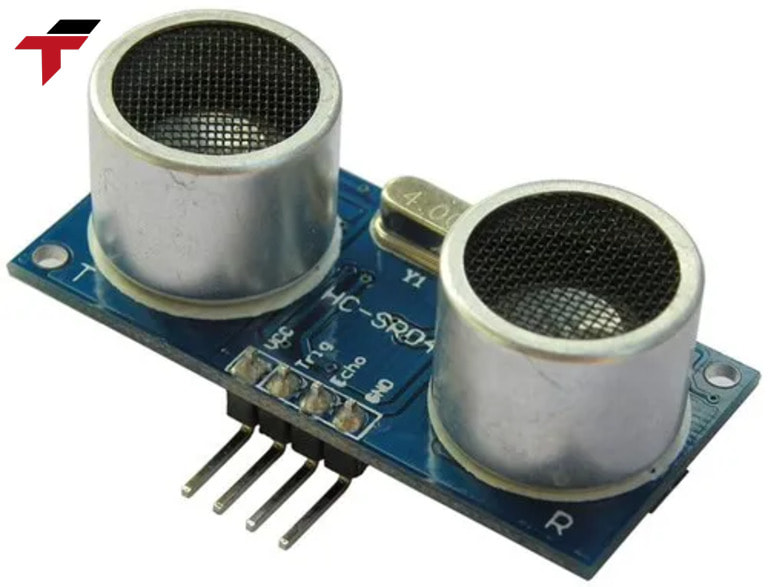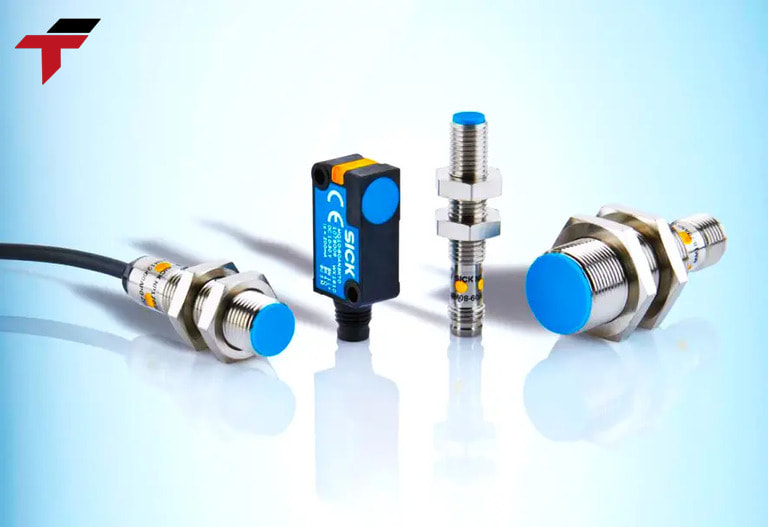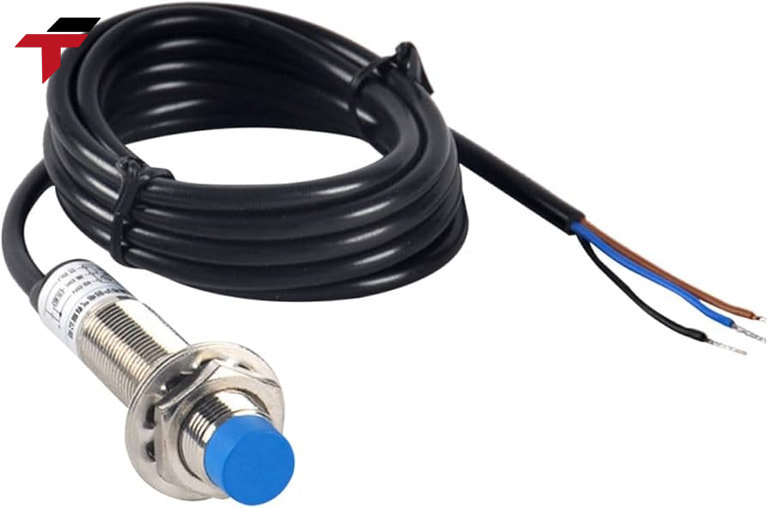The proximity Sensor is an indispensable device in modern automation systems, helping to detect objects without direct contact. With various types such as induction, capacitive, ultrasonic, and optical, Proximity Sensor brings outstanding performance in production and operation.
In the 4.0 era, this device increasingly asserts its important role in smart industries, from production lines, and automatic robots to IoT applications.

Introducing Proximity Sensor
What is a Proximity Sensor?
Proximity Sensor is a type of sensor used to detect the presence or distance of objects without direct contact. This type of sensor works on the principle of changing electromagnetic fields, light, or sound waves to determine the existence of objects within the sensing range.
Proximity Sensor is widely used in industries such as automation, manufacturing, automobiles, and electronics. The device often appears in material detection systems, motion control, or machine safety protection.
How many types of proximity sensors are there?
Proximity sensors are classified based on the principle of operation and the type of materials they can detect. Here are the 5 common types of proximity sensors:
Inductive Proximity Sensor
Inductive proximity sensors work based on electromagnetic fields to detect metal objects. This is a popular type of sensor due to its resistance to dust, water and high temperatures.
The device is suitable for detecting metals and is widely used in the metal processing industry, and factory automation, where the main materials are iron, steel, or copper.
Capacitive Proximity Sensor
This type of sensor works based on the change in capacitance when an object is near. The strength of the capacitive sensor is the ability to detect both metallic and non-metallic materials such as plastic, wood, paper or liquid.
However, the sensor is more sensitive to dirt and moisture, so it is often used in liquid level control, detecting materials in warehouses or non-metallic production lines.
Optical Proximity Sensor
Optical sensors use infrared light or lasers to detect objects. This type of sensor has outstanding advantages in speed and accuracy, even at long distances. Optical sensors are often used in packaging, assembly and product inspection on production lines.
Ultrasonic Proximity Sensor
Based on the principle of emitting sound waves and measuring response time, ultrasonic sensors can detect most types of materials, even in dusty or strong light environments. The device is often used to measure liquid levels in tanks or control distances in autonomous robot systems.
Magnetic Proximity Sensor
Magnetic sensors work by detecting changes in the magnetism of an object. They only detect magnetic materials and are not affected by environmental factors such as dust, oil or water. These sensors are commonly used in magnetic door locking systems, position sensors, and industrial machinery protection devices.

5 common types of proximity sensors
What are the advantages of proximity sensors?
- High Accuracy: Proximity sensors allow for highly accurate distance measurements, improving operational efficiency and ensuring reliability in production lines
- Long Life: Since they are not affected by mechanical wear or friction, Proximity Sensors have a longer life than traditional contact sensors. This reduces maintenance and replacement costs.
- Stable Operation in Harsh Environments: Proximity Sensors operate well in harsh environmental conditions such as high temperatures, high humidity, or environments with dust, water, and oil. This makes them an ideal choice in heavy industry and manufacturing.
- High Integration Capability: Proximity Sensors can be connected to PLCs, DCSs, or other control devices, optimizing monitoring and automation in production.
- High Application: Some types of Proximity Sensors such as capacitive or ultrasonic sensors, are capable of detecting a wide range of materials from metals to non-metals, liquids or wood. This expands the scope of applications in many different industries.

Proximity Sensor brings many benefits to businesses
What are the disadvantages of proximity sensors?
Although Proximity Sensors offer many outstanding benefits in optimizing system performance and durability, they still have certain limitations. Understanding these disadvantages will help you choose and use the sensor effectively, avoiding unwanted problems during operation.
- High investment cost: Compared to traditional contact sensors, Proximity Sensors are more expensive, especially when using high-end sensors such as ultrasonic or optical. Prices range from $500 – $1000.
- Affected by the surrounding environment: Proximity sensors can be affected by the surrounding environment and can change during use, leading to reduced stability and accuracy of the sensor.
What are the precautions when using proximity sensors?
- Select the appropriate sensor type: Each type of Proximity Sensor has a different operating principle, suitable for specific materials and environmental conditions. For example, inductive sensors are suitable for metals, while capacitive sensors are suitable for detecting non-metals such as plastics or liquids.
- Correct installation: Sensor installation must ensure optimal orientation and distance to avoid signal interference. In particular, avoid installing too close to strong magnetic fields or high-intensity light sources to maintain accuracy.
- Regular inspection and maintenance: Proximity sensors need to be inspected and cleaned regularly to ensure stable operation, especially in dusty or greasy environments.
- Ensure correct connection: Ensure that the wires and signals between the sensor and the control system are properly connected. Errors in connection can lead to inaccurate signals or equipment damage.
Complying with the above notes will help the proximity sensor operate stably, improve performance, and minimize maintenance costs during operation.

Things to note when choosing to buy Proximity Sensor
Conclusion
Proximity Sensor plays an important role in optimizing production and operation processes. With the ability to detect objects quickly and accurately, this sensor not only helps improve work efficiency but also ensures safety and minimizes risks. Integrating Proximity Sensor into smart systems such as IoT or industrial robots is an important step towards a modern, efficient and sustainable industry.
